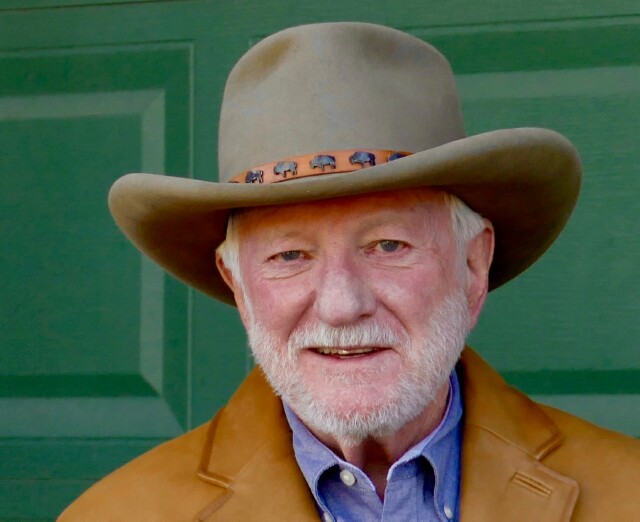What's Happening to the Industry Formerly Known as Cable TV?

What will the question in the headline mean for digital media? Despite the pan-damn-demic, quite a lot is stirring the media pot … in new and interesting ways. A lot of it was on view last month at the SCTE-ISBE Cable-Tec Expo, the largest trade show in the sprawling industry of infrastructure, connectivity and programming which met virtually instead of in Atlanta … successfully. (Related question: Will all high-tech industry confabs go virtual? Probably not … unless a road show replaces the parties and social events.)
Cable-Tec Expo wasn't the only show to make news. The Women in Cable Telecommunications (WICT) Leadership Conference and the National Association for Multi-ethnicity in Communications (NAMIC) Annual Conference were held virtually. (The Walter Kaitz Foundation chose to forego its annual fundraising dinner celebration.) Virtual proved to be a positive as WICT set a record of more than 860 industry professionals registered, while NAMIC had a 40% jump in attendees over last year.
The operators, technicians and suppliers were all scattered but built around a virtual center online. And the industry took credit for answering the interesting fallout of the COVID-19 nightmare that has kept us all sort of at home. It's put a lot of stress upon the internet's infrastructure … with little serious fallout. It wasn't easy handling customer calls, issues, complaints, installation, infrastructure expansion, upkeep and repair under stay-at-home rules. Talk about essential workers!
But that wasn't all … here are some of the other things happening, questions that need to be answered … and more …
The convention, exhibit and panels were moved online driven by COVID-19 and the industry's response(s). Graded, it merits a B+, I'd say. Pretty good. But not so much rurally where the infrastructure, like at my semi-rural house, hasn't been fully upgraded.
There are real upgrades on the way … like hitting true G5 levels on the way to a targeted 10G … which is already real in a Mediacom system, a Charter test (with holograms; take that, Star Trek) and a Comcast trial. 10G boasts more speed, more capacity and the sun, moon and stars … when DOCSIS 4.0 (the secrets from CableLabs that make the internet actually work) gets fully specked … and deployed … and connected to a customer.
So what!?! Right now, every single step is in flux, and changes are on the way.
The more broadly discussed industry creates content, sells or licenses it to someone who puts it on a screen via some kind of distributor who digitizes it and distributes it over the air (by broadcast or cellular or fixed wireless) or wire/fiber (cable, telco and, ummm, a short note that DSL once did that, too) — to any screen, TV, computer, pad, phone, billboard, panel, stovetop, refrigerator, laptop, watch, more to come! Someone pays (or not), watches or uses it — and someone gets paid. Or not.
Just look at what's happened lately.
The programming shift that's growing streaming is naturally impacting linear TV … no matter whether linear cable or linear broadcasting. In short, the old wholesale model, involving long lists of channels and channel bundles, is on its way out, no matter how slowly. Retail is the new name of the game as it's just another case of the internet up-ending a business model and, in turn, re-creating the media eco-systems.
This, of course, explains why Jeff Bewkes took the money and ran. The "new" AT&T media eco-system lost over 625K linear distributed subs while adding only 158K subs for HBO Max in Q3. The middle-men got cut out. The question is, can retail deliver a bigger profit? Maybe, because the cloud might make better sense than the plethora of channels that need to be programmed in the universe of too many cable channels … many of which were added as an excuse to raise rates. But, for cable, that only meant too much bandwidth used that wasn't watched and too many grumbling former subscribers.
In others, a la carte is happening … and probably going to be universal no matter the source. It will happen with current programmers/distributors in all forms of transmission, i.e. cable pipes, one-way over-the-air (broadcasting), two-way over-the-air (4G, fixed wireless and up) or DVDs (for just a little while longer). It won't rule today or the next couple of years … but the next generation of media distribution and consumption will be two-way streaming.
Cable is not what's declining. The linear model is what's disappearing. Corporations like Comcast/Peacock, Charter, AT&T/HBO/Turner, Viacom/CBS (which should change its name to Paramount) and Disney will survive … as will the smaller providers of internet connectivity. And welcome the new disruptors at Netflix, Amazon, Alphabet's YouTube and Apple … and so far, some 300+ others. (Odds are about 20-30 of those might survive a decade or so.)
In other words, streaming wins the long game … if it can figure out something beyond the inevitable sharing of passwords. What we now know as networks will slowly disappear to be replaced by a half dozen repositories of once-powerful names into a collection of programming choices. New and re-positioned brands will proliferate … and finance the creators of new programming. And here, welcome the new set-top boxes of Tivo, Roku, Fire TV and too many others to mention. Of note is Amazon … playing the new STB game as well as programming.
Someone also has figure out how to serve localities as well as national programmers. Broadcasting will have to find a place in the mix. And they are experimenting … the ATSC 3.0 addition is interesting as it adds cell phones to the mix. (For example, Sinclair's ONE Media smartphone that gets NextGen TV signals via an embedded chip for over-the-air TV access.) It'll all be without retransmission consent though. Maybe broadcasters should sell "their spectrum" and just use the internet, too.
The other winners are already solidly in place … the cable system operators. They will absorb and integrate the two-way over-the-air players (cellular and fixed wireless) during this next decade.
And that's the new collective media eco-system: Digital media, which is what cable is becoming … along with other parts of the digital media eco-system.
Random Notes
In a previous column I mentioned how Mr. Holanda and RCN/Wave/Grande (now plus EnTouch Systems, owned by TPG and managed by Patriot Media Consulting) made some things happen. Some really polite, cool workers came and gave us a temporary fix for an infrastructure issue. Unfortunately, we're now sliding back to intermittent interruptions and frustrating calls. But we've now got markings on our driveway and yard for a new buried cable. In short, we've got our fingers crossed.
Click the social buttons to share this story with colleagues and friends.
The opinions expressed here are the author's views and do not necessarily represent the views of MediaVillage.com/MyersBizNet.


